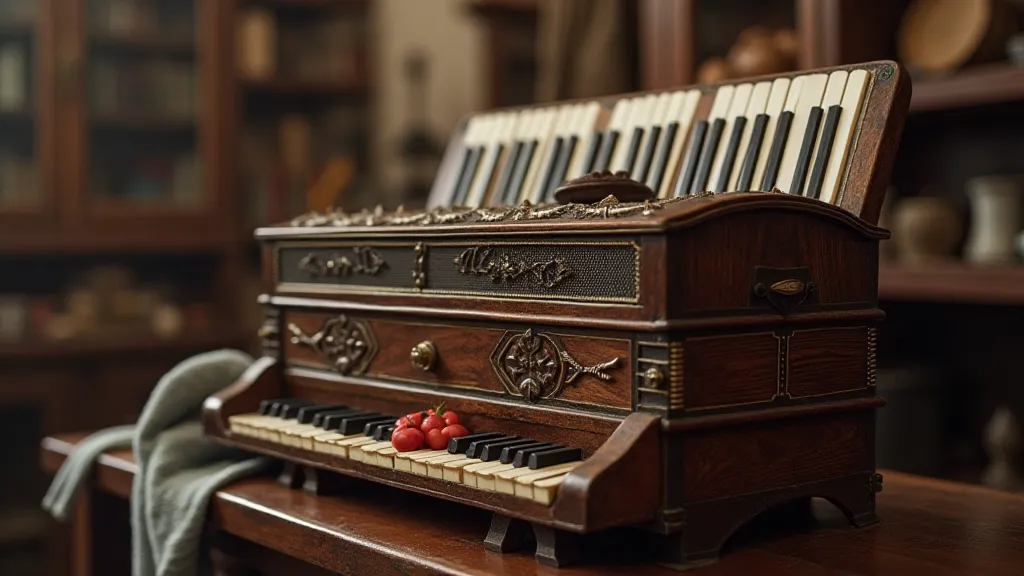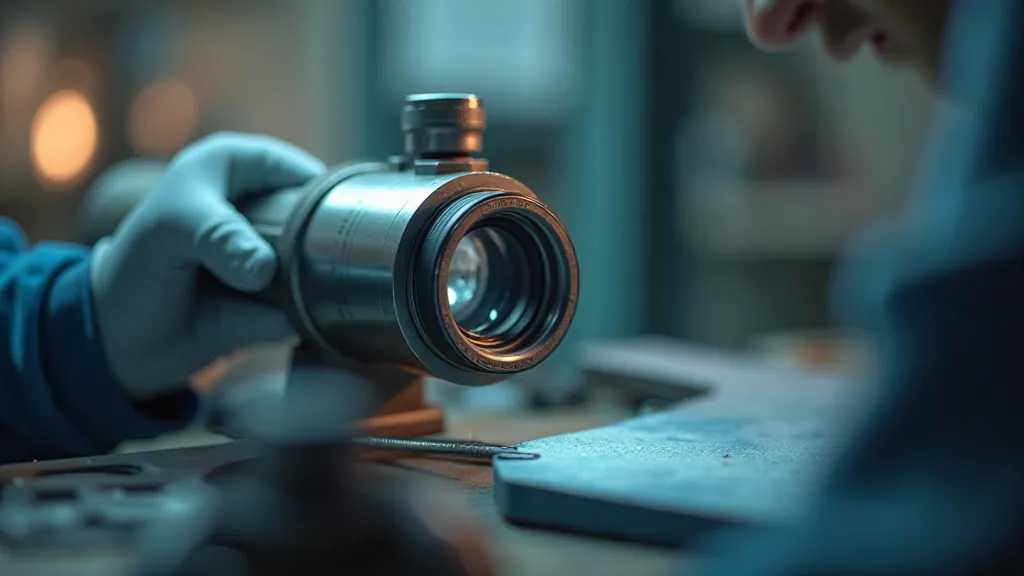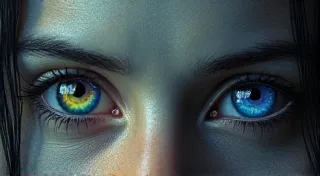Beyond the Hubble: Unlocking Hidden Details with Hyper-Corrected Telescopes
The night sky, viewed through even a modest telescope, evokes a sense of wonder. It’s a window into a reality vastly larger than our own, populated by swirling nebulae, distant galaxies, and the ghosts of light from epochs long past. But what if I told you there's a layer of detail, a richness of color and texture, that most amateur astronomers simply miss? This isn's about larger apertures, though those certainly help. It's about something far more subtle, a refinement of optics – hyper-correction. And in understanding that, we can rediscover a little bit of the beauty found in meticulously crafted instruments, much like appreciating a well-preserved antique accordion.

I remember the first time I truly understood the difference. I’d been happily observing for years, content with my reasonably good reflector. Then, a friend, a dedicated astrophotographer, showed me images taken with a hyper-corrected refractor. The clarity, the subtle gradients of color in the Orion Nebula, the razor-sharp details on Jupiter’s moons – it was transformative. It wasn't just about better resolution; it was about *revealing* something new, something hidden beneath a veil of subtle distortions.
The Problem of Aberrations
To understand hyper-correction, we need a little background in optics. Simple lenses and mirrors, even with significant investment, are inherently flawed. They suffer from aberrations – distortions in the light path that blur or distort the image. Spherical aberration, chromatic aberration, coma, and astigmatism are just a few of the culprits. Early telescopes, often crafted by skilled artisans with limited understanding of advanced optics, struggled to mitigate these flaws. Think of the painstaking work that went into crafting the lenses for Galileo's telescope – marvels of their time, but ultimately limited by the available technology and knowledge.
The Rise of Precision: A Craftsmanship Story
The 19th and early 20th centuries saw a revolution in optical manufacturing. Advances in glassmaking allowed for the production of lenses with more complex shapes and varying refractive indices. Doublets, triplets, and even quadruplets began to appear, each carefully designed to counteract specific aberrations. But it was the development of apochromatic lenses – lenses that largely eliminate chromatic aberration – that truly opened the door to hyper-correction. These lenses typically employed special glass types, often containing rare earth elements, which were incredibly difficult and expensive to produce.
Just as a master accordion maker takes years to perfect the subtle curves of the reeds and the precise fit of the bellows, the production of apochromatic telescope lenses requires a level of craftsmanship that borders on artistry. Each lens must be ground and polished to tolerances measured in fractions of a wavelength of light. The process is incredibly time-consuming and demands an unwavering attention to detail. It’s a journey of refinement, a careful consideration of mounting, and a keen understanding of how even the smallest factors contribute to the final image. Choosing the right mount is crucial too – sometimes, a simple Altazimuth mount will suffice, but for serious observation, understanding the difference between an equatorial mount and an equatorial mount can make a world of difference.
Hyper-Correction: Beyond the Apochromatic
Apochromatic lenses represent a significant improvement, but even they have limitations. Hyper-correction takes the process a step further. It involves precisely correcting for not just the primary aberrations, but also for higher-order aberrations that become more significant with increasingly complex lens designs. This requires advanced computer modeling and incredibly precise manufacturing. Think of it as the difference between a well-tuned piano and one meticulously restored to its original factory specifications, including addressing subtle imperfections in the wood and strings.
The result is a sharper, more contrasty image, revealing details that were previously masked by subtle distortions. Faint nebulae appear more luminous, planetary details become more defined, and the overall sense of depth and realism is significantly enhanced. It’s not just about seeing more; it’s about *experiencing* more. The images almost seem to breathe with an inner life. Careful observation is key, and the principles that govern how we interpret what we see can be surprisingly complex – a fascinating intersection of science and psychology. Some might even say understanding the telescope’s gaze goes beyond just optics.
The Cost and the Reward
Of course, this level of precision comes at a price. Hyper-corrected telescopes are typically more expensive than standard telescopes due to the complex lens designs, the specialized glass types, and the painstaking manufacturing processes. They're also often more delicate, requiring careful handling and storage. But for those who are truly passionate about astronomy and willing to invest in the best possible optics, the reward is undeniable. The meticulousness required echoes a deeper commitment to understanding the cosmos, similar to the skill and dedication involved in Lunar Cartography, meticulously tracing the shadows of time on the Moon’s face.
It’s a journey, much like restoring an antique accordion. The process requires patience, skill, and a deep appreciation for the craftsmanship involved. You're not just acquiring an instrument; you're inheriting a legacy. The subtle hum of the bellows, the precise click of the keys – these are echoes of the past, reminders of the artistry and dedication that went into its creation.

Restoration and Collecting: Preserving a Legacy
Just as there's a thriving community of accordion enthusiasts who restore and collect antique instruments, there's a growing appreciation for vintage hyper-corrected telescopes. These instruments are often prized not only for their optical performance but also for their historical significance and their beautiful craftsmanship. Many feature exquisite brass and mahogany finishes, reflecting the aesthetic tastes of a bygone era.
Restoring a vintage hyper-corrected telescope can be a challenging but rewarding endeavor. It requires a deep understanding of optics, mechanics, and materials science. Finding replacement parts can be difficult, and the cost of refurbishment can be substantial. But for those who are passionate about preserving these pieces of history, the effort is well worth it. These telescopes are not simply tools for observing the universe; they are windows into a rich and fascinating history of scientific innovation and artistic expression. Light pollution, sadly, can hinder these efforts, and finding ways to overcome it is a constant challenge for dedicated observers.

Beyond the optics themselves, careful planning is crucial. Knowing how to mitigate the effects of light pollution’s shadow, particularly in urban environments, allows for the richest observation. Understanding the effects of atmospheric conditions and knowing when to observe also plays a role. For those seeking a deeper connection to the night sky, understanding the principles of celestial navigation—how mounts shape your cosmic journey—can elevate the observing experience.
The Expanding Universe of Detail
The journey towards better optics isn't just about technological advancement; it’s a reflection of our innate desire to understand the universe and our place within it. From understanding the complexities of planetary atmospheres to appreciating the subtle nuances of distant nebulae, hyper-corrected telescopes offer a window into a level of detail previously unimaginable. It's a journey of discovery, fueled by curiosity and a relentless pursuit of clarity. It allows for observations that were simply not possible with earlier technology. It's a chance to see the universe anew, to appreciate the artistry of nature and the ingenuity of human endeavor. The beauty captured through these instruments can be compared to the silent echoes of the universe’s oldest light, revealed through dedicated reflectors.
And for those who are truly dedicated, the rewards are immeasurable. The ability to resolve fine details on the surfaces of planets, to witness the delicate interplay of light and shadow in distant nebulae – these are experiences that transcend mere observation, becoming moments of profound connection with the cosmos. Ultimately, the pursuit of clarity in observing the cosmos isn't just about technology; it’s about appreciating the grandeur of the universe and our place within it, a journey much like the soul of observing—a path to cosmic intimacy.





